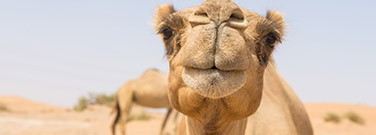Conservationists Use Rewilding to Help Restore Ecosystems

By Kylie Wolfe
Animals of all shapes and sizes keep ecosystems in check, but human actions sometimes disrupt nature’s balance. Teams across the globe are looking to restore various ecosystems by removing non-native species and reintroducing native species, animals that once called the areas home. Doing so could strengthen their habitats, creating healthier forests, curbing climate change, and helping society manage freshwater resources.
Restoring Balance
In the southeastern forests of Australia, an organization called Aussie Ark removed non-native foxes and feral cats that had been preying on local mammals. They reintroduced the Tasmanian devil, a carnivorous marsupial that helps protect native species by driving out non-native ones.
“The basic idea of rewilding is to give space for nature to do its job,” Henrique Pereira, researcher at the German Center for Integrative Biodiversity Research, told Science News for Students. “The idea is to step back from trying to control nature.” Now, the Tasmanian devils can do their own extermination work.
Fighting Climate Change
In Siberia, Russia, a different team is trying to restore an ecosystem that dates back thousands of years. The area used to be home to grazing animals and grasses, and the reintroduction of fur goats and camels is making that true once again.
This effort has been underway for 25 years and in that time, scientists have seen positive changes. New grasses are storing more carbon in their roots and the animals are keeping the soil frozen. Trampled ground stays 25 degrees Fahrenheit colder than untrampled ground. Keeping the soil frozen longer prevents greenhouse gases like methane from escaping. This means recreating sustainable ecosystems could help scientists fight climate change.
Managing Water
In the state of Washington, biologists with the Tulalip Tribes Natural Resources Beaver Reintroduction Project are using beavers to improve salmon habitats and manage freshwater. These semi-aquatic rodents are nature’s dam builders. When beaver-constructed dams begin to cause flooding, the team captures and relocates them to other areas.
In their new homes, they create cool pools of water where young salmon populations thrive. The beavers’ efforts in rivers and streams also help form wetlands that keep wildfires from spreading and store water during dry spells.
Conservation for Generations
Conservationists leading these projects want to help society understand the importance of rewilding and the role animals play in various ecosystems. Their efforts represent only a subset of those taking place around the globe. Each example demonstrates how science can help reverse human actions that have negatively affected the planet. As more initiatives take place, conservationists hope to restore nature’s balance — so it can be enjoyed for generations to come.
Discussion Questions
- What’s the difference between native and non-native species and how do they affect each other?
- Research other examples of rewilding. What did you find?
- How can you be an advocate for conservation?
